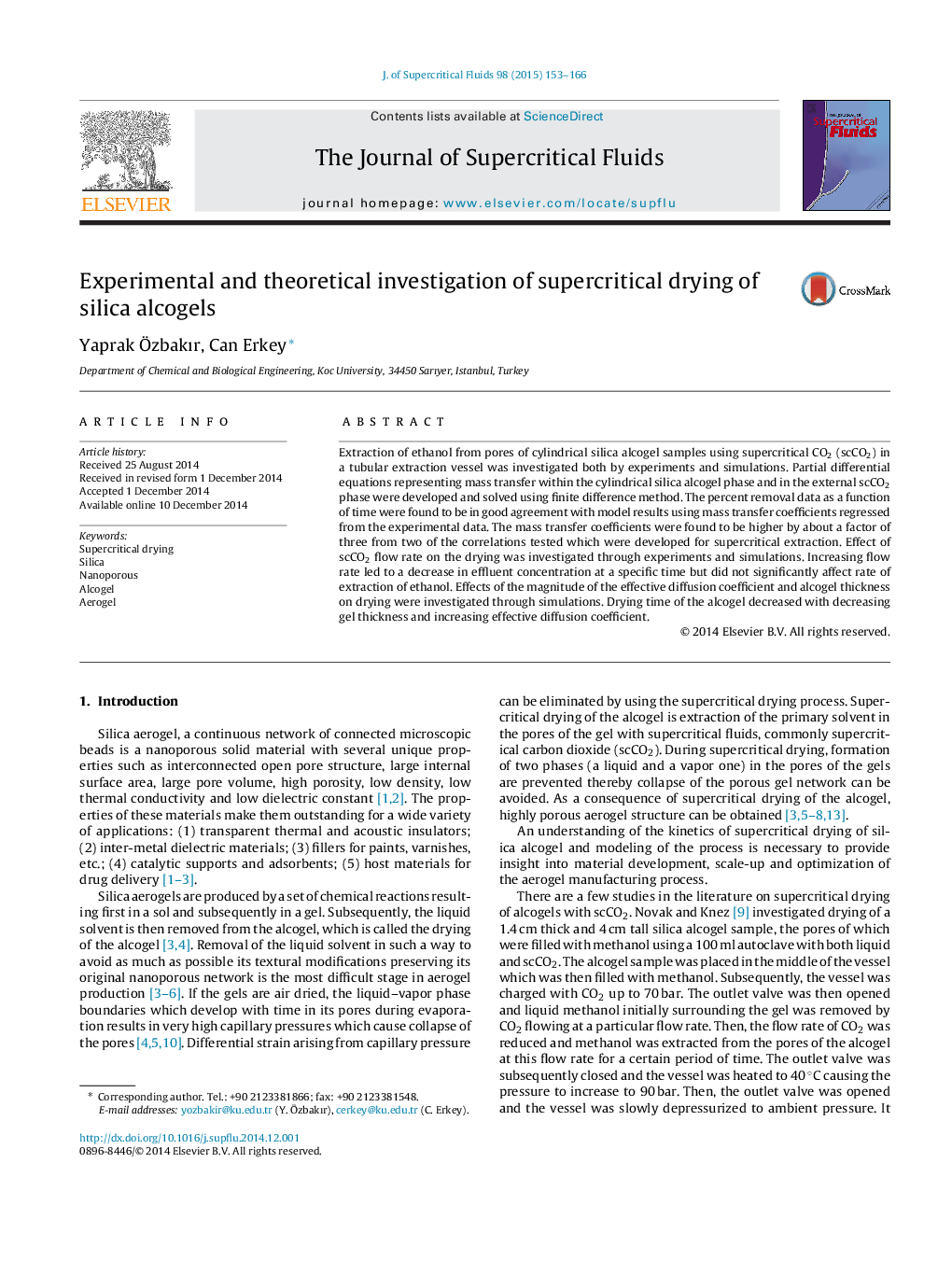| کد مقاله | کد نشریه | سال انتشار | مقاله انگلیسی | نسخه تمام متن |
|---|---|---|---|---|
| 230313 | 1427379 | 2015 | 14 صفحه PDF | دانلود رایگان |
• Mass transfer mechanisms in supercritical drying were investigated.
• Mass transfer coefficients for alcogel drying were regressed from experimental data.
• Mass transfer coefficients were higher than values calculated from correlations in the literature.
• Good agreement was found between experimental data and simulations.
• Flow rate of scCO2 did not affect percent removal as a function of time.
Extraction of ethanol from pores of cylindrical silica alcogel samples using supercritical CO2 (scCO2) in a tubular extraction vessel was investigated both by experiments and simulations. Partial differential equations representing mass transfer within the cylindrical silica alcogel phase and in the external scCO2 phase were developed and solved using finite difference method. The percent removal data as a function of time were found to be in good agreement with model results using mass transfer coefficients regressed from the experimental data. The mass transfer coefficients were found to be higher by about a factor of three from two of the correlations tested which were developed for supercritical extraction. Effect of scCO2 flow rate on the drying was investigated through experiments and simulations. Increasing flow rate led to a decrease in effluent concentration at a specific time but did not significantly affect rate of extraction of ethanol. Effects of the magnitude of the effective diffusion coefficient and alcogel thickness on drying were investigated through simulations. Drying time of the alcogel decreased with decreasing gel thickness and increasing effective diffusion coefficient.
Figure optionsDownload as PowerPoint slide
Journal: The Journal of Supercritical Fluids - Volume 98, March 2015, Pages 153–166
